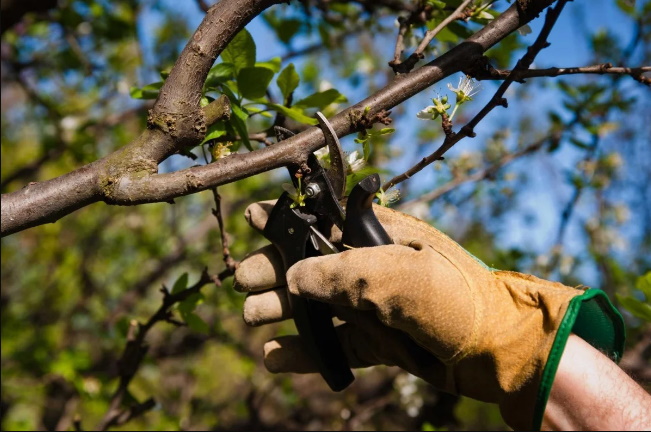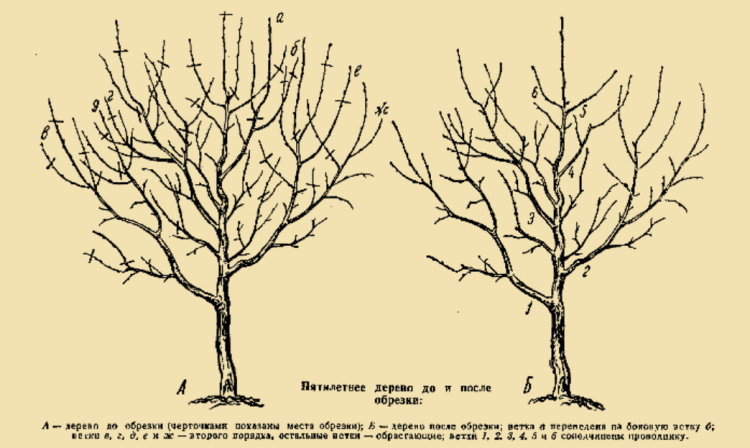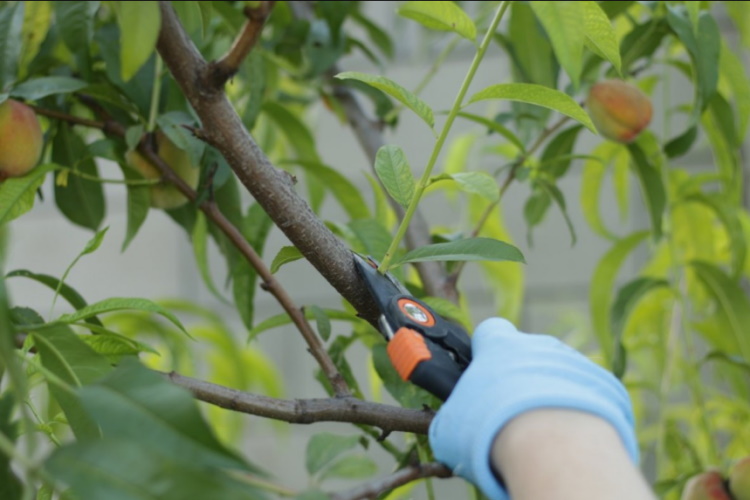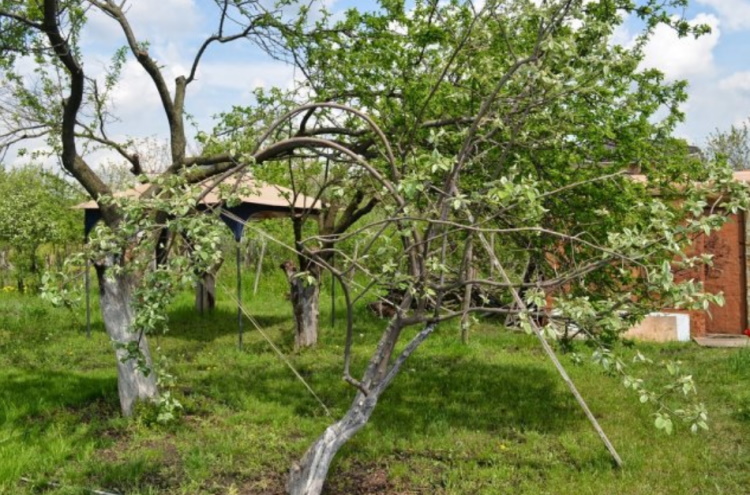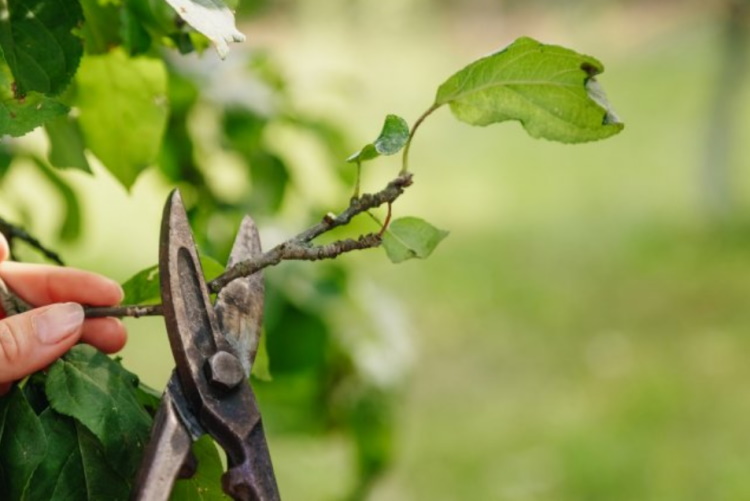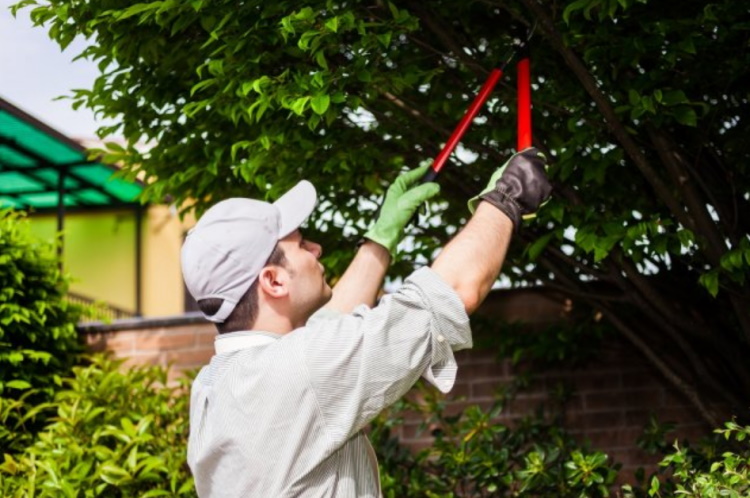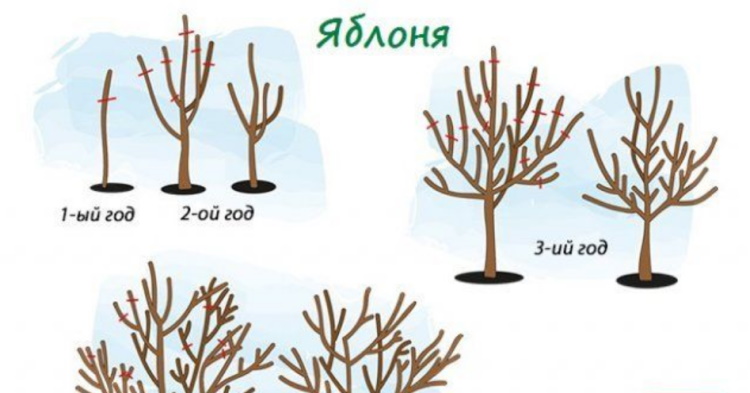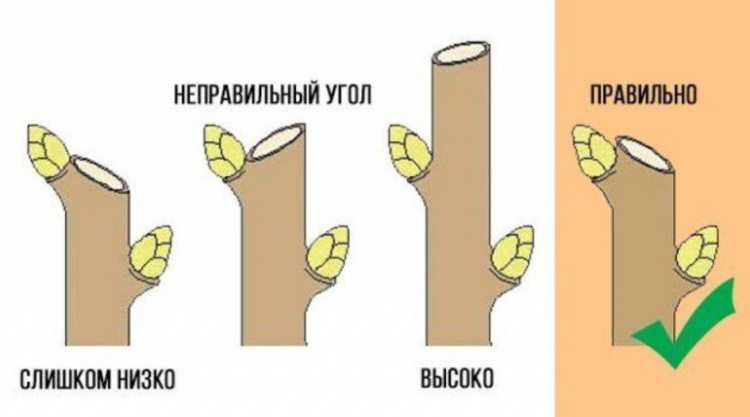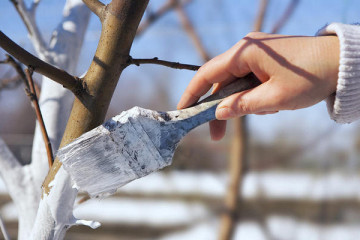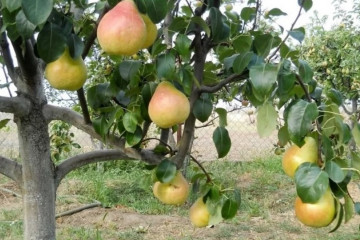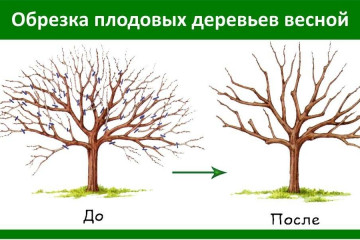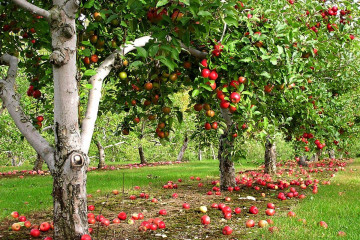Summer pruning of fruit trees in the Moscow region
Content:
As a rule, trees are pruned in the spring before the sap flow begins - in late February, early March or autumn, when the leaves fall. Summer pruning is equally important, especially for young seedlings, the crown of which is just forming.
Why do they carry out summer pruning of apple trees
Summer pruning of fruit trees, including apple trees, helps the formation of the crown, promotes the growth and maturation of young shoots, and increases fruiting. It is difficult to distinguish frozen twigs from healthy ones in the spring, when everything is just beginning to bloom. But this is clearly visible in the summer - buds do not bloom on the frozen branches. Such branches must be removed.
Pruning fruit trees in summer promotes late flowering the following year, which is important during spring frosts, which often affect flower buds and young fruit ovaries. During the formation of the crown, the method of removing excess shoots strengthens the young tree, it begins to bear fruit better.
The thinned crown lets the sun's rays pass to the lower tier of branches, on which an ovary does not form due to lack of lighting. Shaded areas of foliage due to access to the sun will not hurt microflora. On the cut off shoots of one variety of apple trees in the summer, you can make clothespins of another variety.
When pruning apple trees in the summer, it is very important not to overdo it. Removing a large amount of overgrowth can be very stressful for the tree, it may not recover until the fall and will not cope well with the winter.
Experienced gardeners recommend pruning for the purpose of rejuvenation 2 times a year, in spring and summer. After such a procedure, the leaf plates become brighter, more saturated color, their structure changes, cracks disappear on the bark, it becomes more moisturized, not depleted.
What trees and shrubs can be cut in summer
Summer pruning is acceptable for all fruit trees and shrubs. In young seedlings that have not yet begun to bear fruit, they form the correct crown in this way. It will contribute to high yields in the future.
Advantages and Disadvantages of Pruning Trees in Summer
Summer thinning is of great importance for improving the illumination of the middle and lower branches, making spraying easier. Their better ventilation prevents disease damage.
In summer, sick, dry, frozen twigs are clearly visible, which must be removed so that healthy ones do not get infected from them. Timely pruning of seedlings helps to eliminate abnormal development, stimulates the correct formation of the crown.
Young saplings of cherries and cherries after planting stretch strongly upward, trying to overtake others in receiving more sunlight. If not trimmed in time, they will look ankle-free. For plums, summer pruning is a guarantee of early fruiting, cherry plum helps in the development of the crown.
Old trees direct all their energy to maintaining the overgrown crown, its life support, trying to protect itself from diseases and pests. Only timely cutting of old and diseased branches can rejuvenate them and extend their lifespan.
Corrective pruning is recommended for many fruit trees in the summer, aimed at removing diseased branches and slowing down the growth of young growth. As for the apricot, it can be trimmed several times in the summer.
First, at the beginning of June, all new growth is subject to pruning, which began to gain strength at a rapid pace. To preserve the vitality of the tree, it is shortened by 30 cm.After 2 weeks, when new shoots begin to grow on the cut branches, they must be thinned out, leaving 3-4 of the strongest ones, which will later be a bookmark for the formation of skeletal branches of a new tier.
Pruning apricot with the aim of forming a crown is aimed at stimulating early ripening of fruits, at increasing yields. Thinned trees do not interfere with the growth of nearby trees, do not shade them.
Summer pruning has a positive effect on the palatability of the fruit. Cut branches do not need special antiseptics, their cuts are closed with a liquid that the tree itself secretes.
Technique for shaping and pruning fruit trees
Summer removal of unnecessary shoots, rejuvenation of old trees is carried out in different summer months - some need pruning in June, others in July. It all depends on the type of tree, the conditions of its growth, age, the growth rate of the overgrowth, weather conditions, and the regions of planting. For example, in the Moscow region this can be done all summer.
Blinding of the kidneys (eyes)
A new branch can grow from any developed bud. To prevent this from happening, the buds are cut off with a garden knife. This procedure is called kidney blinding. When they are removed, nutrients are redirected. Instead of participating in the development of the kidney, substances are spent on strengthening and activating the growth of existing branches.
Grassing and tilting branches are useful tricks
When pinching, young shoots break out soon after their appearance, preventing them from developing. This is done in order to direct the life forces of the tree to the development and ripening of fruits, and not to young growth, which also contributes to the thickening of the crown. The duration of pinching of young shoots continues throughout the warm season. For a tree, such pruning is less traumatic than removing fully formed branches.
The intensity of the crop is influenced not only by correct pruning, but also by the corresponding slope of the branches. The correct slope forms from June to August. Only young twigs are suitable for this. They are pulled to the ground with ropes, which are attached to the ground with hammered pegs.
In this position, the branches hold the entire season so that in the future their direction does not change. Fixing the branches parallel to the ground accelerates the ripening of the fruit on them. They grow larger and are easier to harvest once ripe.
Pinching (pinching)
Pinching of young twigs is carried out on young shoots that have reached 20 centimeters in length. During pinching of the upper part of the stem, instead of growing in length, it shoots lateral shoots, forming the main skeletal branches.
This simple method is carried out throughout the summer.When pinching, the skeletal branches of seedlings slow down their growth for 2 weeks, which makes it possible for not so rapidly developing young growth to catch up to them. This contributes to the correct formation of the crown.
Breaking shoots
Herbaceous shoots, the base of which has not yet hardened, are subject to breaking out. The breaking method is carried out at the growth stage of 5-10 cm. All branches that are unnecessary in the formation of the tree skeleton are to be removed. The infection does not have time to get into the wounds at the site of the fragments - they quickly heal.
At one year of age, an apple and a pear are pruned, no more than 6 buds are left on the trunk, from which a correct, healthy shoot will grow next year. On two-year-old seedlings, 5 young branches are left, the rest are removed.
The rapid growth of peaches and apricots is controlled by pruning their tops. Their height should be such that the fruit can be picked while standing on the ground, or at least on a ladder.
How to avoid serious injury to a tree
Summer pruning before ripening of the fruit, increases its growth, improves quality. A big plus of the procedure is that in the warm season, sap flow increases, which, like an antiseptic, disinfects wounds, contributes to their rapid healing.
There are 3 types of pruning scheme in summer:
- Weak pruning is applied to young seedlings, when all branches are to be shortened by one quarter. A pruned branch gives side shoots, which contributes to the correct formation of the crown, and in the future it will be the key to a good, abundant harvest.
- Medium pruning is indicated for trees that have reached 5-6 years of age. Their branches are shortened by 1/3. This contributes to higher yields.
- Heavy pruning means removing half of the entire length of the branch. This is done to strengthen it by thickening the base.
In order not to harm when removing already formed branches, first file the lower part, then the upper one. After that they break off. This tactic helps to cut more evenly without breaking the bark. Healing of cuts is faster than fractures.
Tips and tricks for beginner gardeners
In order to rejuvenate old trees, to extend their full life, they are intensively pruned. This procedure promotes the growth of young shoots called wen. They are recommended to be cut along the second bud, then 2 new shoots will form on each of them, which are also subject to similar pruning. This method leads to the renewal of the crown with new fruiting branches.
Step-by-step instructions for pruning young seedlings:
- An annual seedling should be pruned at a height of approximately 0.5 m from the soil level. There should be no twigs on it.
- On the trunk at the time of pruning, 3 buds should remain intact on opposite sides of the stem, which will become the first tier of the tree. The stem is cut over the fourth bud. It should be located on the other side of the vaccination site. As it grows, the trunk remains flat, does not bend.
- In the spring, pruning must be done on the grown shoot again, leaving 3 buds to form the second tier.
- For 3 years, all shoots that have grown on the trunk must be removed. Annual shoots should be bent down to weaken their growth and delay fruiting. At this stage, the formation of the crown is completed.
Summer pruning is just as important as autumn / spring pruning. But do not forget that it is only an addition to the main one.Sanitary pruning can be done at any time of the year.
